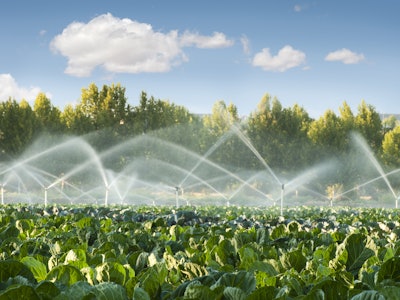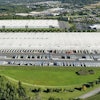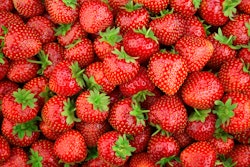
The agriculture system is famously resilient. Farmers, ranchers and others throughout the industry have navigated the Coronavirus disease (COVID-19) pandemic with characteristic determination. Conversations have ranged from reacting to changing consumer behaviors to pressures from dramatic supply chain disruption. While agtech hasn’t been the star of these conversations, it has implications across these themes and more.
The pre-pandemic shift
Agtech began with a focus on data—helping farmers monitor conditions, assess efficiencies and optimize yields in crop and animal production. Pre-pandemic, agtech was shifting from capturing data to designing solutions to improve the value of collected data and drive actionable insights. At the same time, the industry began to see broader application of technologies, such as crop-specific innovations, robotics and automation systems and land and asset management tools. However, there is still a sizeable gap in both investment and innovation that address the middle of the supply chain, from the farm gate to the back door of a retailer or restaurant.
Pandemic pinch points
Seana Day, partner at Better Food Ventures, says this “messy middle” of the food and ag supply chain involves four pillars—first mile (supply), production, distribution/logistics and retail/foodservice (demand). The production and distribution/logistics pillars have seen continued incremental digitization in recent years, including advancements in order management and planning, Internet of Things (IoT)-enabled equipment and optimizing logistics. However, Day says, “that first pillar around supply and the last one around demand planning have been under-penetrated, yet are critical to connect a modernizing food supply chain.”
The pandemic highlighted some challenges in those pillars. Two vivid examples stand out. In pork processing, some plants experienced COVID-19 outbreaks among workers and had to close down facilities, leaving pork producers with nowhere to sell animals ready to be processed and retailers with empty shelves. And, as the supply chain worked to reorganize itself around Americans’ virtually overnight shift to eating at home instead of at foodservice locations, fresh produce, milk and other perishable items went to waste.
While it’s unlikely agtech could have made a difference in these extraordinary circumstances, Day says, “that’s not to say we shouldn’t be striving for data for better decision-making. These bottlenecks and risks aren’t going away.”
On the supply side, the pandemic also emphasized a challenge farmers have been experiencing for years—labor shortages. Gary Wishnatzki, a grower whose operation ships strawberries and other berry crops year-round from growing locations in Florida and California, says growers have historically relied on the H-2A guest worker program, but in the past decade, there have simply been fewer workers available. Plus, the pandemic put a point on the problem.
“When we started not being able to get visas for people to come in and do harvesting and borders were shut down, it accentuated how bad this problem has become,” he adds.
To address the issue, several years ago, Wishnatzki and his partners looked into robotics to supplement their traditional workforce. He envisions robots existing alongside a traditional workforce, but says it’s important to develop these technologies now.
“This labor crisis is real and it’s going to get worse. Time is running out to find solutions,” Wishnatzki says.
Similarly, A.G. Kawamura, a California berry and vegetable grower, is turning toward increased technology use due to the ongoing and significant labor challenges made more difficult by COVID-19.
Agtech could also make a difference in addressing transparency and traceability. As consumers gained more visibility into how food makes it to store shelves and felt the impact of the disruption to that system, confidence in the supply chain came into sharper focus.
According to a Food Industry Association’s report, transparency is important or extremely important to 81% of shoppers.
“When people are talking about transparency and traceability, they’re really talking about food safety and origin,” says Day.
That’s why optimizing the supply chain around tracking and leveraging applicable data could provide consumers more confidence about where their food is coming from and that it’s safe.
While robust food safety and traceability programs are already in place for growers and retailers, new technologies could have other benefits.
“The pandemic has highlighted this idea that people don’t necessarily want a lot of hands touching their food,” says Wishnatzki.
Also, innovations could provide even more specific traceability, down to the precise location in a field from which a berry was picked, in addition to enabling improved product quality, extended shelf life and more sustainable packaging, all of which have implications for consumers.
Post-pandemic implications for agtech
Ultimately, the pandemic may force agtech to go back to basics. For example, cloud connectivity is not universally available in many of the rural areas where much of the nation’s food production begins, which inhibits technology adoption. Stakeholders across the supply chain are facing economic pressures and uncertainties that may make them less likely to invest in new technologies. Balancing new or improved value to users with fundamental accessibility and reasonable cost will be critical. As it moves forward, the agtech space will also need to consider several questions.
· How can agtech improve the perishable supply chain? Companies are already trying to address the challenges at protein processors in a number of ways, such as using vision systems to monitor the shop floor to see which butchers are faster and have better yields. These kinds of systems have other implications—the monitoring that’s meant to improve yields can also monitor food and worker safety. Labor shortages existed pre-pandemic and need solutions now more than ever. Stabilizing and localizing the supply chain also holds opportunities, such as technologies for indoor agriculture.
· How can agtech make data more valuable? As more data becomes available, the interoperability of that data is a key concern. A first step toward creating a more nimble and effective supply chain lies in interconnected data and technologies that allow for insights to help with business planning, anticipating supply and demand and maximizing efficiency in logistics across stakeholders. Each production system, from grains to produce to livestock, has unique data requirements that must be considered.
· How can agtech provide holistic solutions? Though maximizing production will always be important, agtech has potential far beyond the field or barn. One of the questions is, could we see a blurring of the line between agtech and foodtech as these systems become more connected by consumer demands for transparency and traceability? Technology innovators need to think about how their products impact the full food and ag value chain, from planting all the way to the app the consumer uses to order their groceries.
The complexity of the food and ag supply chain makes agtech innovation challenging, but also exciting. The effects of the pandemic may mean a near-term shift in emphasis from big, blue sky ideas to more immediate pain points, but the need remains for technology to solve problems throughout the supply chain. The key will be to emphasize collaboration, integration and value for all stakeholders.



















